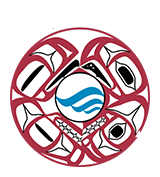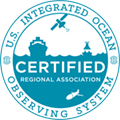Pacific Northwest Waters: Gateway to Our Future
2 February 2012
Microsoft Conference Center, Redmond, Washington
Ensuring coastal safety requires an understanding of hazards such as tsunamis, flooding, erosion and harmful algal blooms. Monitoring and predicting the coastal ocean and estuaries provides direct economic benefits to maritime operations, ports and harbors, fisheries, aquaculture and the recreation and tourism industries. Even far inland, the ocean influences weather and climate affecting all businesses and citizens.
'Pacific Northwest Waters: Gateway to Our Future' brought together beneficiaries and providers of marine information to explore existing and emerging user needs for data, information and forecasts. The free to attend workshop was held at the Microsoft Conference Center in Redmond WA on February 2nd provided delegates from industries, governments, and academia with an opportunity to learn more about the benefits provided by sustained and integrated marine observations.
Presentations
| Keynote Video: Laura Furgione, NWS Deputy Assistant Administrator | YouTube | 22:03 | 2 Feb 2012 |
| Video: Dave Martin, NANOOS Board Chair | YouTube | 13:31 | 2 Feb 2012 |
| Presentation: Dave Martin, NANOOS Board Chair | 23 MB | 2 Feb 2012 |
| Video: Jan Newton, NANOOS Executive Director | YouTube | 20:01 | 2 Feb 2012 |
| Presentation: Jan Newton, NANOOS Executive Director | 12.6 MB | 2 Feb 2012 |
| Video: Jonathan Allan, NANOOS User Products Committee Chair | YouTube | 22:36 | 2 Feb 2012 |
| Presentation: Jonathan Allan, NANOOS User Products Committee Chair | 14.2 MB | 2 Feb 2012 |
| National Observing System Partners Alliance for Coastal Technologies (ACT) Southeastern Universities Research Association (SURA) Integrated Ocean Observing System IOOS | |||||||

